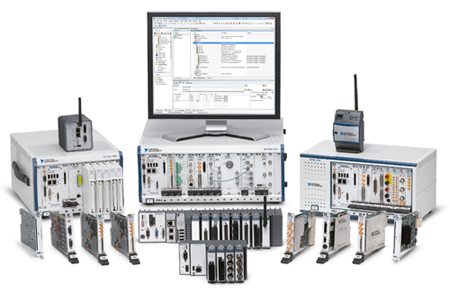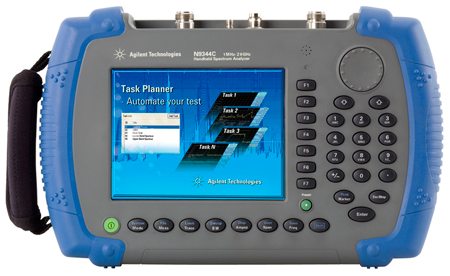While today’s technology offers solutions for monitoring or remote reporting via mobile devices, test organisations need new expertise to unite the networking, Web services and mobile app portions of the solution
Uma Gupta

MARCH 2012: Testing plays a critical role from the very beginning of the product life-cycle, i.e., the design stage. Be it any technology or any product, unless and until it is validated and tested, it cannot be manufactured and produced for the market.
Test engineers need to measure the parameters of the signals with a high degree of accuracy and performance. Today, circuits are packed in compact assemblies and affected by a lot of interference, noise and unwanted signals. This, in turn, affects the measurements. Instruments are being designed to measure such signal levels. The measurement data also needs to be analysed. To enable this, PC connectivity has become a common feature on general-purpose test instruments.
T&M needs across different segments are broadly common. But deep-down, there are different levels of testing and different-grade T&M products being used.
Requirements across segments
Within education, where test and measurement is mainly meant for teaching or research purpose, there is quite a significant difference between two sub-segments. In undergraduate labs, basic or mid-range instruments such as digital multimeters, power supplies, oscilloscopes and function generators are mainly used to do some basic measurements and learn different aspects of testing. But in research work, high-end scopes, spectrum analysers, network analysers and vector signal generators are used in such areas as high-energy physics, nanotechnology, millimeter-wave and UWB.
In aerospace and defence, high-bandwidth, high-frequency T&M instruments are being used for state-of-the-art electronic systems such as RADAR, satellite and surveillance. Shortening the product development cycle has long been a key objective of military and aerospace organisations. One method to reduce the development time is concurrent design and test, which is often represented with the V-diagram product development model. In these industries, for which the end product is a highly complex ‘system of systems,’ the left side of the V-diagram is considered ‘design’ and the right side represents ‘test.’
Defence communication systems have traditionally been analogue in nature. However, digital technologies are replacing the traditional analogue communication systems. To successfully implement the digital systems, one needs to analyse the technology manifestations in different environments. Software-defined and modular test systems can be used to meet these requirements.
Catering to each technology, there may be various testing needs. For instance, in communication one may have to check the signal frequency, power, harmonics, etc, while in automotive one may have to do different levels of stress testing, torque testing, pressure testing, etc.
As wireless communication continues to grow, the pressure to find innovative ways to more effectively use channel bandwidth is increasing. One of the most recent innovations is the development of multiple-input multiple-output (MIMO) antennae systems to improve the signal-to-noise ratio and increase the throughput. Accurate testing of MIMO transceivers presents significant challenges to existing test instrumentation architectures. New architectures like hybrid PXI or benchtop instrumentation enable not only advanced signal processing algorithms to multiplex and de-multiplex various spatial streams but also tight synchronisation between transmit and receive antennae.

In general, T&M users are increasingly demanding the best possible measurement and source accuracy, noise, signal response, and system throughput for today’s demanding measurements. With the constant evolution of technology, they expect upgradeable instruments with backward technology support. Also, as data rates increase, there is demand for higher-bandwidth instruments. In the manufacturing domain, fully automated environment test setups are in demand. Similarly, as the communication technologies move from 2G to 3G to 4G, one needs handheld, portable but rugged instruments to deploy base stations and towers.
Users want the T&M instruments to be capable of offering universal connectivity via GPIB, USB, LXI/Ethernet and other interfaces. They increasingly expect T&M products to keep pace with rapid evolutions in desktop, mobile and Internet computing standards, the most recent of which is support for mobile devices like smartphones and tablets. The software that enables all of these advanced capabilities must be simple and easy to understand, use and integrate into human interactive and programmatic applications in the lab and the factory.
Different instruments at a glance
Oscilloscopes by and large have seen most changes over the last couple of years.
“With the availability of high-end technology like digital signal processors and field-programmable gate arrays at low cost, signal acquisition has become pretty fast. This has made it possible to get real-time display on the LCD of a digital oscilloscope, unlike in cathode-ray tube oscilloscopes. With digital oscilloscopes, it is also possible to add advanced features like fast Fourier transform, waveform recorder, data logger, advance triggering and logic channels at a very low cost,” says P. Prabhu, general manager (technical), Scientific Mes-Technik.






